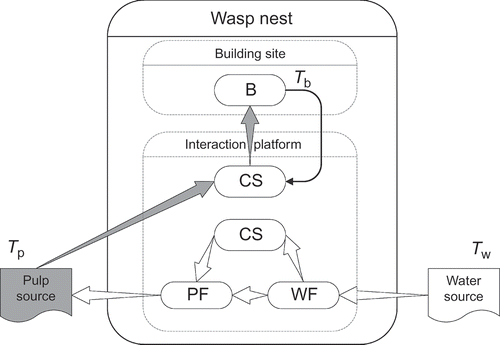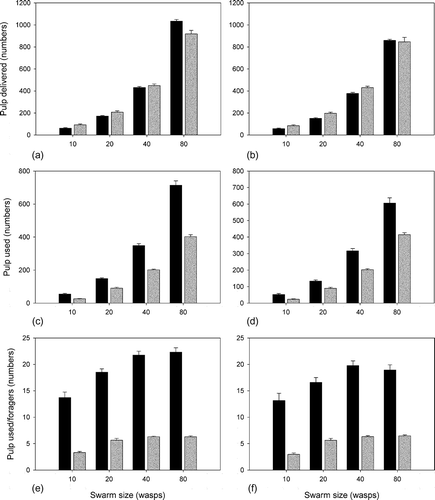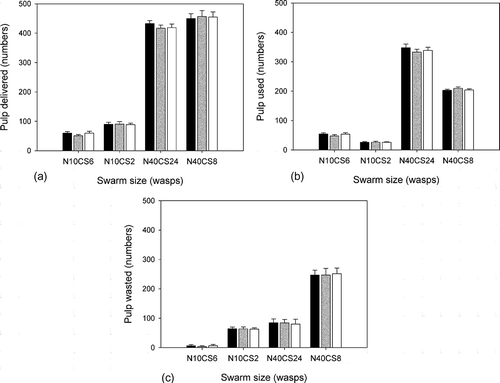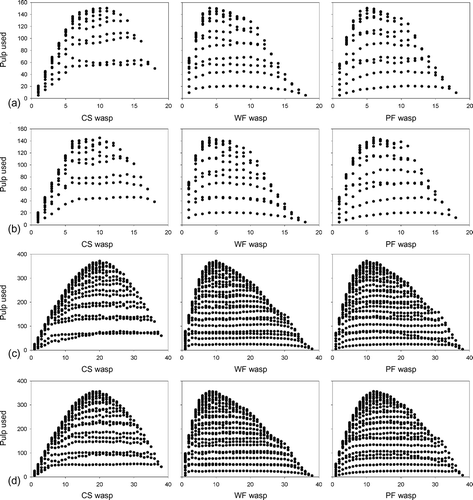Figures & data
Table 1. Parameters of the model
Figure 1. Schematic representation of the wasp nest. Wasp types: WF, water forager; PF, pulp forager; CS, common stomach wasp; B, builder. The flow of the water is shown by white arrows. Pulp is transported from pulp source to the nest (grey arrow) and it is given to builders. Builders build the pulp into the nest on the building site. Solid arrow shows the transition of behaviour of builders who finished their job. T p, T w and T b: time needed for pulp, water collection and building, respectively.

Figure 2. Interactions of workers on the interaction platform. Workers: WF wasp with dark grey colour and drop shape: WF; PF wasp with medium grey colour and hexagonal shape: PF; CS wasp with grey body and white abdomen: CS wasp. CS wasps listed as builders are on the building site constructing the nest. The bar next to the wasp indicates the fullness of stomach with water. The large bar next to the active platform shows the relative fullness of the CS.

Figure 3. Function of building efficiency (pulp input) as the function of swarm size in case of no-resistance water exchange strategy. Black columns: 60% of the swarms are CS wasps and 20–20% are PF and WF, respectively; grey columns: 20% of the swarms are CS wasps and 40–40% are PF and WF, respectively. Panels (a) and (b): total pulp unit delivered; panels (c) and (d): pulp used for construction; panels (e) and (f): pulp used for construction/(WF + PF); panels (a), (c) and (e): T w = T p = 4; panels (b), (d) and (f): T w = 2, T p = 8.

Figure 4. Comparison of the effectiveness of colonies using different water exchange strategies. Colony composition is given in the x-axis as NxxCSxx where Nxx is the colony size and CSxx is the number of CS wasps in the colony. The number of PF and WF in these colonies is (N – CS)/2). Black columns: no resistance; grey columns: linear resistance; white columns: sigmoid resistance.

Figure 5. Average efficiency (dots) of different workforce combinations in small (N = 20) (a, b) and larger (N = 40) (c, d) swarms. Efficiency (pulp used for construction) is calculated from 20 parallel runs of the same type of colony mix and represented as a single dot at each panel that describes the number of wasps in a given task for that colony; (a, c): T p = T w = 4; (b, d): T w = 2, T p = 8.
